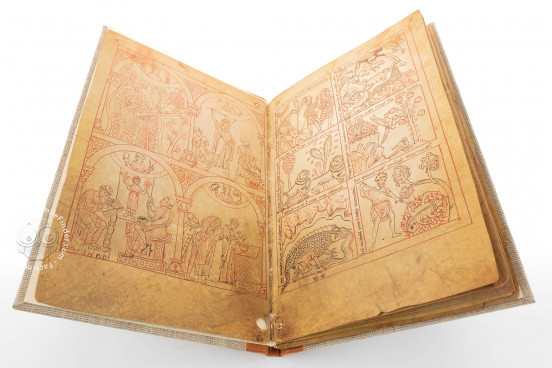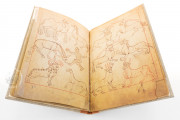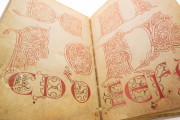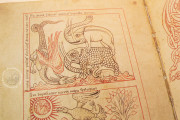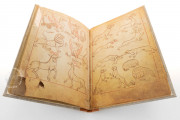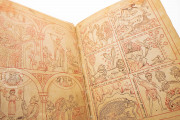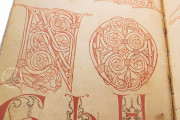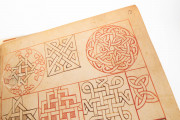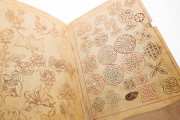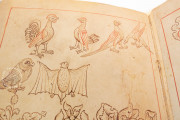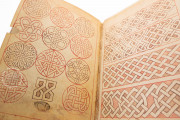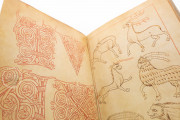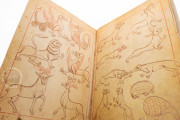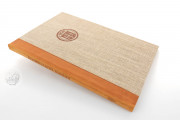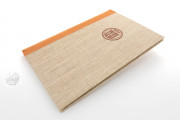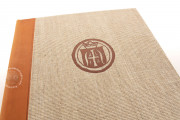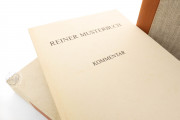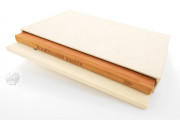One of the sources of their work were for many medieval illuminators the so-called Model Books, from which they often took inspiration when crafting illustrations and depictions. The Model Book of Rein, named after where it was composed, the namesake Cistercian abbey near Graz in Styria, is among the finest example of this type of illuminated manuscript.
The Model Book of Rein, also known as Reiner/Reuner Musterbuch, is part of a collection of manuscripts created in the first half of the thirteenth century, assembled afterward and now preserved in the Österreische Nationalbibliothek with the shelfmark Cod. 507.
The Model Book of Rein, a One-of-a-Kind Codex
This Model Book was composed by an anonymous artist who depicted scenes taken from everyday life and the animal world. He also included calligraphic initials as well as motives to be used when drawing floor tiles and stained glass windows. This manuscript, crafted during the thirteenth century, is possibly the oldest Model Book to have survived from the medieval period.
Everyday Life in a Medieval Environment
The Model Book of Rein begins by illustrating various scenes taken from typical daily life in the Middle Ages. The incredibly detailed depictions describe farming, the arts and crafts, but also fishing and hunting flanked by scenes of monastic life. The manuscript also features forty-eight real and imaginary animals, plants, and precious stones. The birds deserve a special mention due to their convoluted movements: scholars now assume they could have possibly served as models for historiated initials.
A Handbook for the Calligrapher
Some initials do appear in the Model Book of Rein, namely in the different alphabets, made up of simple majuscule letters or illustrated initials that follow the aforementioned depictions of animals and nature. The letters are then followed by drawings of multi-lobed, scroll-like leaves that encircle flower and fruit motives. The Model Book ends with an example of lavish ornaments to be used when drawing floor tiles and stained glass windows, in a style that is reminiscent of Greek mosaics. All of these features make the Model Book of Rein a captivating summary of medieval art and culture.
We have 2 facsimiles of the manuscript "Model Book of Rein":
- Das Reiner Musterbuch (Leather Edition) facsimile edition published by Akademische Druck- u. Verlagsanstalt (ADEVA), 1979
- Das Reiner Musterbuch (Half-leather Edition) facsimile edition published by Akademische Druck- u. Verlagsanstalt (ADEVA), 1979

